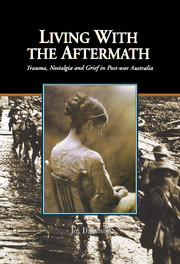1 - Introduction
Published online by Cambridge University Press: 06 July 2010
Summary
‘I am a war widow’ explains Pat Medaris, whose husband, Jack had served in the Korean and Vietnam wars.
I think it fills me in with Jack because he was away so much at Vietnam and Korea, Malaysia, but I feel I'm part of that, you know what I mean? Part of his thing, by being a war widow … By association I feel that I'm actually a war widow through him, so therefore what I am is part of him. It keeps me connected with him.
The role of this connection between the past and the present in shaping identity is one of the key concerns of this book. Through an analysis of seventy interviews conducted with war widows, my aim is to explore how memory and identity are linked. What does it mean to be a war widow? How have memories shaped that identity? How do women convey their life histories?
This study is based on interviews conducted with Australian war widows whose husbands died either during wartime, or afterwards because of a war-related injury. Using oral testimonies as the basis for a study of war widows opens up possibilities that official sources do not allow in the same way, for the emotional detail of widows' experiences is not documented in such material. Rather than consider war widows primarily as welfare recipients – as others have done – I shift the attention to the emotional experience of widowhood during the post-war period.
Information
- Type
- Chapter
- Information
- Living with the AftermathTrauma, Nostalgia and Grief in Post-War Australia, pp. 1 - 8Publisher: Cambridge University PressPrint publication year: 2001
